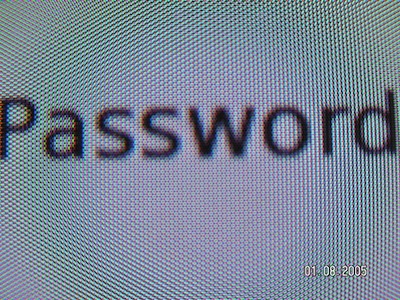
Pass phrases and Passwords
“If you've ever lost your wallet, you know the sense of vulnerability that comes with it. Someone might be walking around with your identification, pretending to be you. If someone steals your passwords, they could do the same thing online. "
Weak passwords
You probably already aware of not creating passwords using any combination of consecutive numbers or letters such as "12345678", "lmnopqrs", or adjacent letters on your keyboard such as "qwerty." And you've probably heard that using your login name, your spouse's name, or your birthday as your password are also big no-nos, or that you should never use a word that can be found in the dictionary, in any language? & even common words spelled backwards (Although at times becomes hard to remember)
Step 1: Create strong passwords that you can remember
The advice that we should follow is to come up with a completely random combination of numbers and symbols. We all know that a strong password is the one that, includes a combination of letters, numbers, and symbols and is easy for you to remember, but difficult for others to guess. This is the right approach but at times we tend to make the password complex for us to remember and resultant, we take a note of it on paper. Doing so we defeat the purpose of Strong Passwords, why? Chances are you would write it down and keep it in the top drawer of your desk and then it's No longer such a Great Password after all.
The easiest way to create a strong password is to come up with a pass phrase. A pass phrase is a sentence that you can remember, like "My son Aiden is three years older than my daughter Anna." You can make a pretty strong password by using the first letter of each word of the sentence. For example, msaityotmda, well we all know that we have to include numbers special characters for it to be valid.
You can make this password valid & stronger by using a combination of upper and lowercase letters, numbers, and special characters that look like letters. Substitute a @-sign instead of a, $-sign instead of an s,! Instead of an I or 1, (for c, 0 for o and so on. Well, you were not the first person to do that.)
For example, using the same memorable sentence and a few tricks, your password is now M$@!3y0tmd@ If you still think that is too hard to remember, you could try a more common phrase, such as "You can't teach an old dog new tricks." If you are using a common phrase, make sure to inject at least one number or symbol into the password. Such as U (t@0DnT.
Step 2: Keep your passwords a secret
Keeping your passwords safe means you have to keep them secret. Do not give them to friends and do not write them down and keep them at your desk or in an unprotected file on your computer. Your desk and that friend may not have the best motives when it comes to your privacy.
You should also be wary when giving them to the Web Site where you created the password in the first place. A new way in which hackers trick people into giving away their passwords and other personal information is through a scam called "phishing." Phishing is the practice of sending millions of bogus e-mails that appear to come from popular Web sites. The e-mails look so official that many people will respond to requests for their login name and password

No comments:
Post a Comment